Barberry Thunberg "Aurea": description, planting and care

Barberry Thunberg "Aurea" was brought to our country from China, Japan, where this culture is extremely widespread in the mountains. This type of terrain hardened the plant, making it resistant to cold, wind, and drought. In Russia, barberry is grown both in the south and in the northern regions. Gardeners are attracted by the simplicity of caring for the plant, its good immunity, endurance and beautiful appearance. The shrub looks great in any design composition, decorates any type of landscape. You can not be afraid to plant a plant in the city, the barberry of this variety adapts well to different types of soil and is undemanding to the purity of the air.
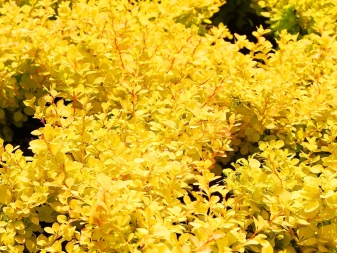

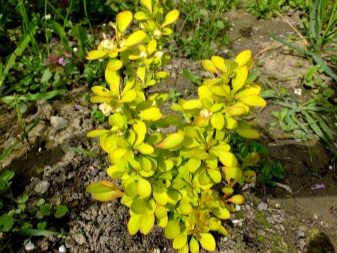

Peculiarities
Barberry Thunberg "Aurea" is perfect for landscaping gardens, its foliage is not too large in size, the flowering is original and spectacular. If Aurea is planted in a sufficiently lit place, its foliage will delight with a beautiful yellow color with a hint of lemon.
Description of the variety and main characteristics:
unusual color of the leaves, subject to a sunny place;
low bush size, maximum height 80 cm;
compact, but the crown can develop up to 1.5 m in width;
does not grow very quickly;
in autumn, the color of the leaves changes from yellowness, goes to an orange tone;
the young plant has thorns in the color of the leaves;
blooms in early spring and fades by summer;
inflorescences of juicy yellow color;
at the end of flowering, scarlet fruits form in place of withered flowers;
the decorativeness of the shrub is all-season, since in winter it is decorated with berries.
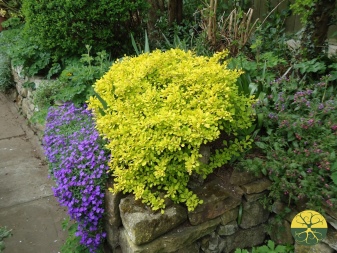
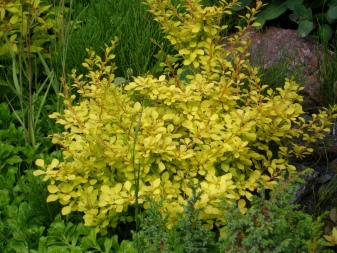
The fruits of the barberry of this variety are unsuitable for human consumption, but the birds peck them with pleasure. This culture is distinguished by its hardiness, especially in comparison with other varieties of barberry. Changes in weather conditions, little moisture, drafts, rains, unclean air cannot harm the development of the bush. You should not plant the plant in the shade, otherwise it will lose its decorative effect, the foliage will be dark, inexpressive.
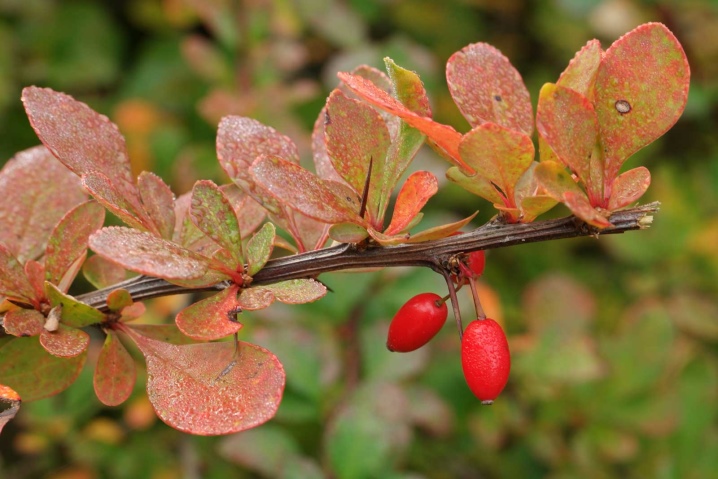
Among the advantages of the variety, experts distinguish the following:
high decorativeness - the type of crown, the shape of the bush, the color of the foliage, compactness allow the use of barberry in various landscape compositions;
grows well both alone and in a group;
rhizomes are extremely strong, strong immunity;
unpretentious care;
rarely attacked by insects;
recovers quickly after pruning.
As for the shortcomings, the main one is the presence of thorns. It is necessary to work with the bush, being careful, pruning, weeding are fraught with some difficulties. Another nuance - with its winter hardiness, the upper shoots can freeze. This problem is solved by removing frozen branches.
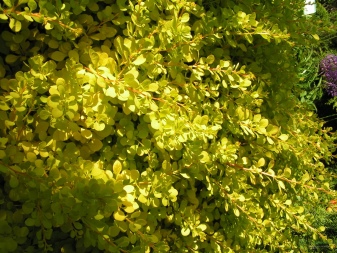
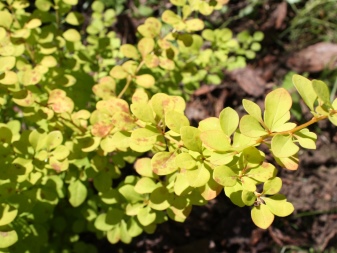
How to plant?
Landing "Aurea" is not a very difficult event, first of all you need to choose the right place for landing. Barberry grows best in the sun, so the optimal planting area is well lit. The plant grows well in partial shade, but in the shade it loses most of its decorative features. As for the composition of the soil, the plant is unpretentious. The soil must be drained, optimal alkaline. Discard places where there is stagnant moisture.
There is evidence that when exposed to direct sunlight throughout the day, leaves can be burned.
Therefore, partial shade is the ideal place. The soil should not be too wet, but it must be thoroughly loosened. If the plant is planted in regions with harsh winters, it will be more comfortable in a place protected from drafts.
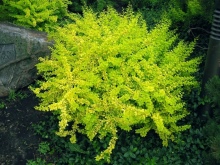
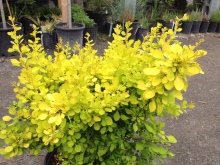
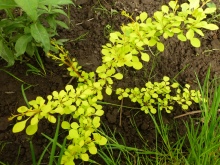
Barberry gets along well with various representatives of the flora and with each other. To form an Aurea hedge, it should be planted at intervals of 4 or 5 seedlings per meter. If the distance between adult bushes is assumed - 2 seedlings are placed at a distance of 1 meter. Bushes from the container are planted together with an earthen clod. The optimal planting time is in the spring after the snow has melted, and also in the fall after the foliage has fallen.
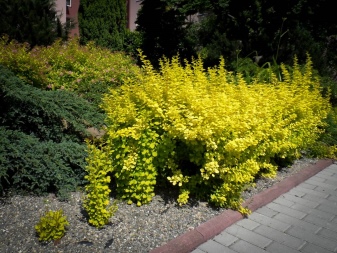
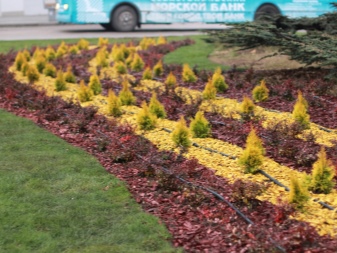
Algorithm for disembarking "Aurea":
you need to prepare the soil with an acidity of 6 to 7.5%;
for this, sand, compost, turf are introduced in equal proportions;
if the acidity needs to be lowered, ash, lime, 200-300 g per bush is introduced into the soil;
a three-year-old bush should be planted in a permanent place;
the soil is fed, loosened, a half-meter depression is formed in it;
humus, turf, sand are located at the bottom;
a drainage layer is formed;
then the seedling is placed in a hole and covered with soil;
the soil is tamped, moistened, mulched.

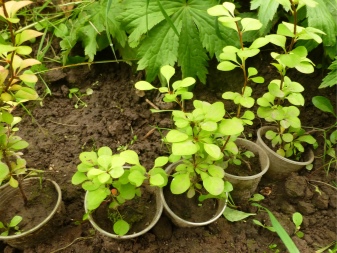
How to take care of it properly?
Caring for barberry Thunberg "Aurea" is not particularly difficult, however, it requires the regularity of some activities.
Watering and feeding
Immediately after planting, the plant is qualitatively moistened. Subsequently, it is necessary to monitor the condition of the soil and not water too abundantly. If the weather is not rainy, it is enough to water the barberry once a week, in the proportion of a bucket per bush. In dry summers the amount of watering is increased, in rainy summers it is reduced.
As for feeding, despite the unpretentiousness, some rules for fertilizing should be followed:
a year after planting, fertilizers containing nitrogen are introduced in the spring;
for this, a urea solution is created in proportions of 25 g per bucket and poured into the root;
such events are repeated every 3 years.
After watering, you can loosen the soil not too deeply and mulch if necessary.
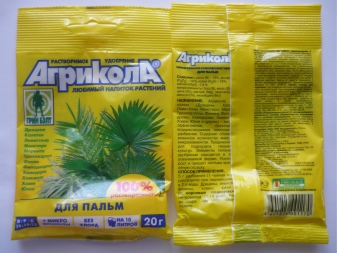

Pruning
The barberry shrub is cut for the first time about 3 years after planting. The best time for pruning is spring. It is necessary to select non-developing shoots, stems that have dried up, frozen over and remove them. Such sanitization is done subsequently as needed. As for a decorative type haircut, its purpose is to form a crown. It is held twice a year - at the beginning of summer and in August. Decorative pruning is unnecessary for natural growth.
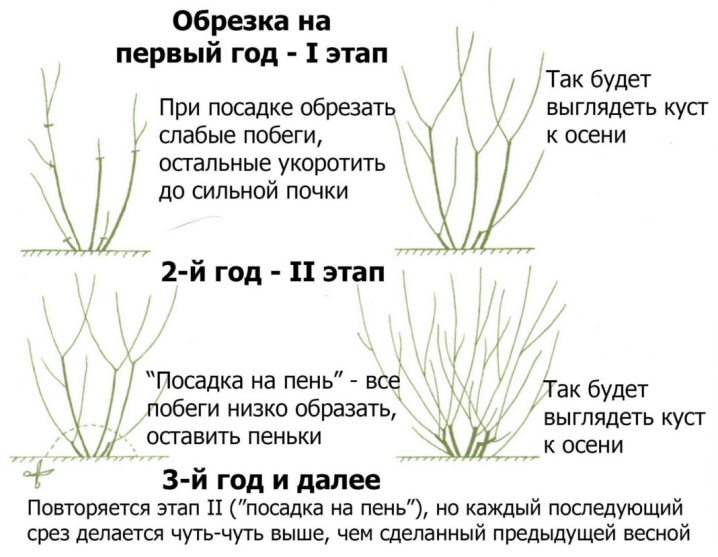
Preparing for winter
The barberry "Aurea" tolerates winter well, but in regions with a harsh climate it is better to cover young bushes. In the first 3 years, a shelter is formed from spruce branches, fallen foliage. This event is carried out as soon as the soil begins to freeze and the temperature does not rise above 5 C. Bushes growing singly are wrapped with tarpaulin or sacking, tied with a rope to hold in the wind.
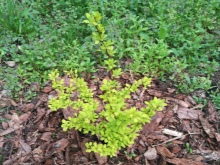
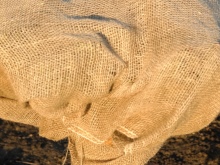
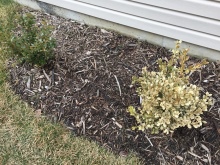
Reproduction methods
There are several breeding methods for "Aurea", and all bring good results. Most often, the plant is bred with seeds and cuttings. Both seeds and seedlings can be bought in garden stores, stratification is required before planting. Autumn sowing gives a better result than spring sowing, the seedling yield is high. The algorithm is simple and consists of the following actions:
first of all, fruits are harvested, dried and seeds are obtained;
they should be washed and kept in a manganese solution;
sown in loosened and watered soil, deepening by 1 cm;
in spring, the process is identical, but stratification is required for 3 months.
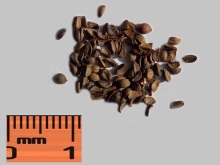
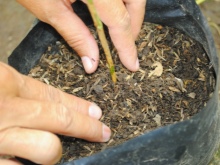

You can also propagate barris by dividing the bush. It is necessary to dig up an adult plant, separate with a pruner and transplant. This is a rather rare method compared to cuttings. The cuttings are taken green, young shoots are cut off, which have 2 nodes and an internode. Planting cuttings for rooting is carried out in a container with a soil mixture of sand, peat. They can be transplanted to a permanent place in a year or two.

Diseases and pests
The immunity of the barberry Thunberg "Aurea" is considered quite strong, plants rarely get sick, especially with fungal ailments, pest attacks are an infrequent phenomenon. At the same time, it is necessary to monitor the condition of the plant, since early detection of the disease gives more chances for a quick and problem-free treatment. You should be wary of such problems:
powdery mildew fungal infection;
fungal spot, which can have different variations;
aphids are dangerous, which can dry out the bush;
rust on the foliage spoils its decorative appearance, the leaves dry, fall;
the flower moth eats fruits;
the leaves are gnawed by a barberry sawfly.
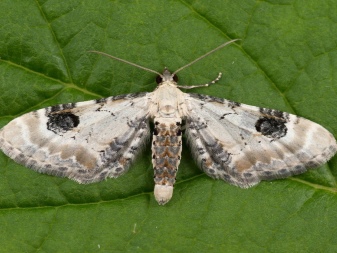
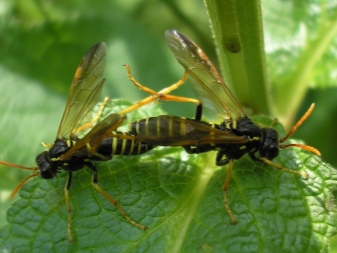
Powdery mildew is most often found in different types of barberry, this disease is manifested by a white bloom on the leaves. Measures must be taken immediately, otherwise the entire shrub will be infected. The affected areas are cut off and the plant is sprayed with special agents. Preventive measures protect the plant not only from powdery mildew, but also other types of fungi.
To do this, every spring, they are sprayed with fungicidal compositions before flowering. If pests are found, treatment with insecticidal solutions should be carried out.
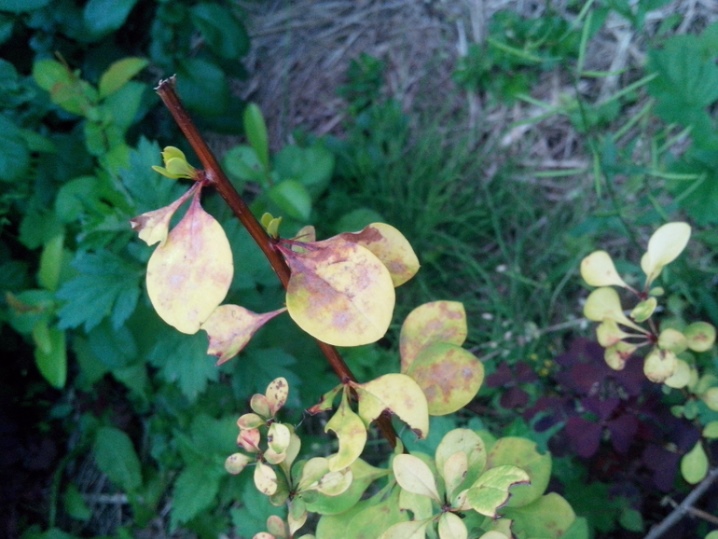
Use in landscape design
Barberry "Aurea" looks great in different design compositions.
The yellow color is eye-catching and makes the bush the center of the ensembles.
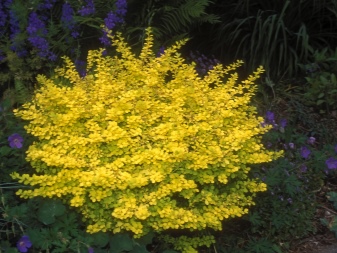

Looks great both in combination with other types of barberry, and in tandem with different plants.
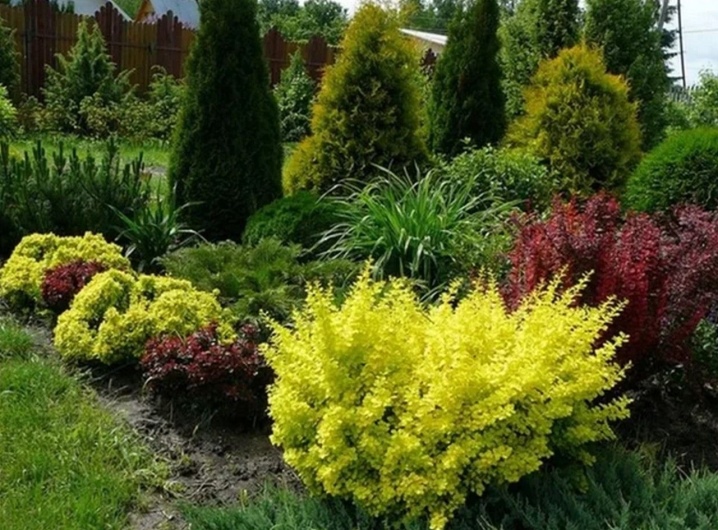
Well suited for decorating stone gardens, front doors, ponds, paths, walls, fences.
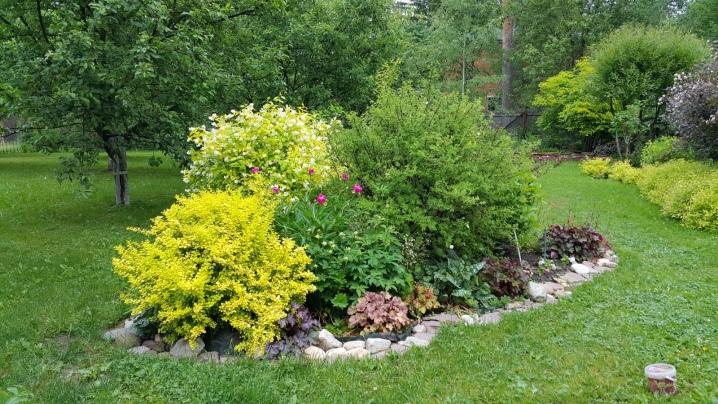
If you trim the plant, you can create a low curb.
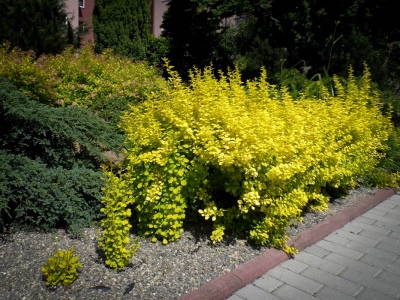
The use of Thunberg barberry in landscape design, see below.



































































The comment was sent successfully.